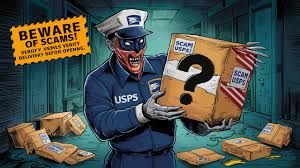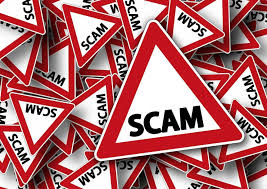Table of Contents
Introduction:9300120111410471677883
9300120111410471677883: Have you ever received a strange message claiming to be from USPS, complete with a tracking number that looks oddly specific?
The code is 9300120111410471677883. If you have ever encountered it, you are not alone.
This number has been associated with a controversy about fraud rising in recent years.
People indeed order and receive parcels from delivery services frequently.
It would be rather odd to claim that con artists and other impostors, who exploit people’s trust in the delivery
system, do not exist.
In this аrtiсle, we will clarify the details of the scam that have not been revealed before, describe its functioning, and give important advice to people who want to avoid becoming its next victim.
Let’s go straight to the point!
How does the Scam Work?

The 9300120111410471677883 fraud is usually initiated with a text that appears to be from the USPS.
Mails or calls targeted at the victims contain this tracking number, which is not very helpful as it involves the delivery of a package.
A seemingly respectable website with seemingly credible prospects often sends out the message.
The links may redirect to fraudulent sites aimed at capturing personal information.
They may also charge them for fictitious shipping charges or taxes.
This method takes advantage of some of the worry of the non-appearance of a package.
In some instances, they use social engineering persuasion methods and make up fake situations, which can cause the recipients to hurry up to answer.
It is evident: collect all possible private details or money before the target realizes that he is being conned.
Knowing such tactics is necessary to enable individuals to notice when something does not seem right in non-requested texts concerning packages.
Warning Signs and Red Flags of 9300120111410471677883

One should not take the 9300120111410471677883 scams lightly.
One of the first warning signs is receiving a message about a package you did not expect, stating there is a problem with the delivery.
If you didn’t order the package, it is best to refrain from extensive activities.
Another classic case is a pressing tone in their requests.
Fakes create a timely sense of urgency that makes you believe that action must be taken immediately to avoid negative repercussions or additional costs.
This method can impair judgment and lead people into such traps.
Be careful with or watch out for e-mails and texts with incorrect spelling or grammatical mistakes.
Credible companies do not have such professionals for their communication, unlike fraudsters, who do not care about these matters.
Also, be careful if the text asks for personal details like your address or payment information immediately.
Actual companies generally do not seek sensitive information in one-off and unsecured ways like SMS or emails.
Steps to Take if You’ve Been a Victim
In the event that you fear that you could possibly have been a victim in the scam identified with number 9300120111410471677883, it is your responsibility to take action on such suspicion. First and foremost, information on the subject matter needs to be collected and organized.
Do not delete or throw out any correspondence and conversations such as emails, SMS or otherwise, that pertains to the scam.
These may be important for making the complaint.
After that, contact the financial institution or credit card provider right away.
Tell them the case details and ask how to protect your accounts.
Contact your local police department to report the crime and make a report to the Federal Trade Commission.
This can help reduce or eliminate such incidences.
To protect yourself, you may also place a fraud alert on your credit file.
This compels creditors to verify a person’s identity before issuing new credits in that person’s name.
Please read your bank and credit card statements carefully and regularly for unusual activities. Vigilance is key to preventing future exposure.
Humanize AI text i
How to Avoid Falling for the Scam
Be on the lookout for common scams like 9300120111410471677883. Awareness is your best defense.
When tracking packages, always check the tracking numbers twice. Instead, call in the tracking for the USPS at their website instead of following any links in emails or messages.
Do not respond to texts or calls you did not request.
Always give yourself a “what if ” moment when you receive a notice that doesn’t seem right.
Scammers will sometimes create a rush to get a quick response from their targets.
Use complex passwords on all valid accounts and follow up the procedure by activating the two-step verification whenever possible.
It also means more elements are required for the scammer to be able to access your information.
Listen to your gut instinct.
Lastly, whenever you think something is questionable, do not be afraid to verify or contact support through official forms rather than the dubious contact details in the message.
Other Common Package Scams
There are many types of package fraud, all aiming to steal one’s trust and curiosity.
“Missing” deliveries through emails and phone messages is one of the most common frauds.
People receive an e-mail or a text advising them to come and take a package, but the package is not there because the link to the phishing website is fake.
Counterfeit shipping labels are another form.
Scammers forward packages with fake shipping numbers and demand payments from the recipients so they are ‘released’ from their rough seas.
This scheme garners individuals into giving their private or financial information.
Some thieves also act like known, reputable courier firms like FedEx or UPS.
They make companies look natural and even make victims fill in “schedules” to alter the taking of deliveries.
It is essential to be careful and look out for these scams before they catch you off guard.
When there is a scam, it is essential to ensure that if it is some kind of communication, such as an email or a call, you do not reply directly to it as a tendency to close it; instead, look for the official sources.
Conclusion
In this age of technology, understanding the complexities of scams such as 9300120111410471677883 is very important.
People can combat fraud in their first stage of exposure.
You can protect your personal information and spare others from being victimized by taking simple measures such as spotting warning signals and understanding what to do when you find yourself in such a situation.
Learning about the usual package scams will also help you feel more capable of engaging in online purchasing transactions.
It is always important to note that prevention is the best option.
Trust your feelings and be adequately informed before taking inappropriate action regarding packages or shipment alerts.
If we all remain vigilant and careful, we will strive to improve cyberspace safety.
FAQs:
What is 9300120111410471677883?
It’s a fake USPS tracking number scam.
How does the 9300120111410471677883 scam work?
Fake messages with phishing links.
What to do with a 9300120111410471677883 message?
Verify via the USPS website; don’t click links.
Signs of a 9300120111410471677883 scam?
Unexpected messages, urgency, poor grammar.
How to avoid the 9300120111410471677883 scam?
Check tracking on the USPS site; be cautious.
Why is 9300120111410471677883 a scam?
It’s used to steal personal information.
Similar scams to 9300120111410471677883?
Fake delivery notifications and shipping labels.
How do I verify 9300120111410471677883?
Use the official USPS website.



